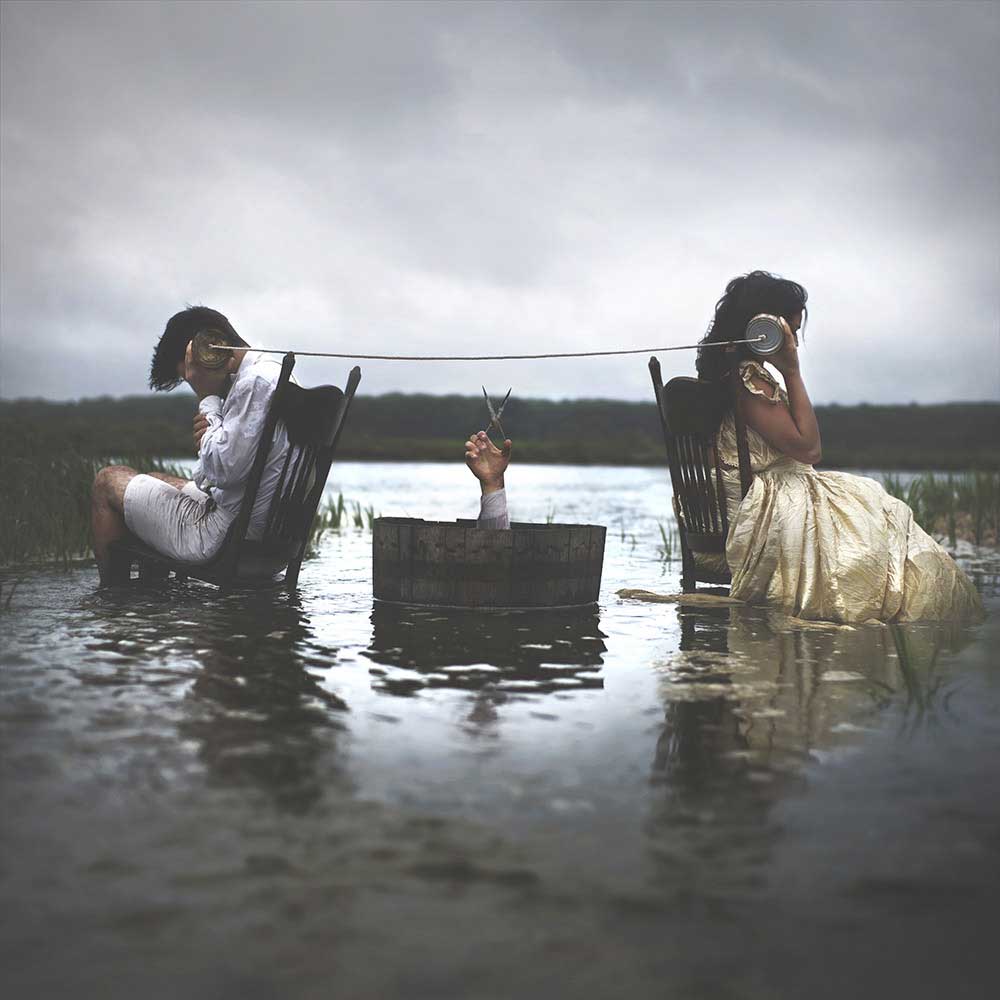Sleep paralysis is an experience in which the individual becomes conscious and is left immobile in a state between being awake and asleep.
The wakeful mind separates itself from the mobile functions of the sleeping body and the individual begins to experience visual and auditory hallucinations – essentially dreaming while awake. For most of my life, I have struggled with this purgatory state of consciousness.
I have experienced extreme terror during these dreams, which include faceless silhouetted figures, embraces from shadow-like hands, warping of reality around me – all while being completely paralyzed in the midst of being awake and sleeping.
It has taken a huge toll on my well-being, but I have since been able to find therapy through transforming these night terrors into my artwork.

I often keep a journal or pad of paper on the edge of my nightstand so I can begin writing about my experiences, the moment I regain the ability to use motor functions. It is crucial to me that I begin documenting the dream the instance that I wake up. I will sketch a quick drawing of what I saw or felt, rather than attempting to describe the experience with words. The act of sketching the dream will inform the format of the final composition for the image that has yet to be photographed. Reoccuring characters such as faceless figures become both protagonist and antagonists in my work.
The photographs that I create contain meticulous crafting and planning, ranging from creating props and costumes by hand, modeling for multiple characters, and piecing each photograph together to formulate a tangible reproduction of each dream experience. To create props and clothing for my characters, I often receive an influential spark from studying art history books and photographic archives of different periods to derive a blend of the events portrayed and combine my own twist on the subject I am creating. Sewing, metal and woodworking are three of many crafts that I rely on to bring the imagined environment to life.
The philosophy for the production of these images follows a strict the guideline of shooting the entirety of the image within one designated point of where the camera is placed. I strategically shoot a multitude images on a tripod while I model for the composition as the camera shoots on self-timer or shutter release remote.
Bringing myself to model as the subject in these chaotic scenarios reflects the physical and mental struggles that take place within the dreams. The scenarios within the project allow me to become a multitude of different characters which all perform feats of bizarre nature.

Upon further research into sleep paralysis, the misdiagnosis through history became a subject of interest to me. Many of the people associated the dreams with religious themes or possessions by ungodly entities. I began reaching out to individuals who have claimed to previously have these dreams, sparingly or consistently. Comparisons between the accounts allowed me to distinguish a set of similar aspects, such as figures pacing about their room and becoming embraced by them in a threatening manner. A few individuals expressed their ability to control these dreams and project themselves from their bodies to combat the physical paralysis. Others claim to have similar auditory hallucinations that accompany their visual experiences, often consisting of screams or words in undecipherable tongues.
I give my viewers the ability to openly interpret the story line and concept of each piece, rather than handing them specific guidelines or blueprints to the concept of each work. Individuals who have experienced sleep paralysis will be able to pick up on dream symbolism that I implement within my work, but I do not create my artwork specifically for them. I aim to give the viewers who have not experienced these night terrors a visual taste of what lies within the in between realm of sleep and consciousness. [Official Website]

























